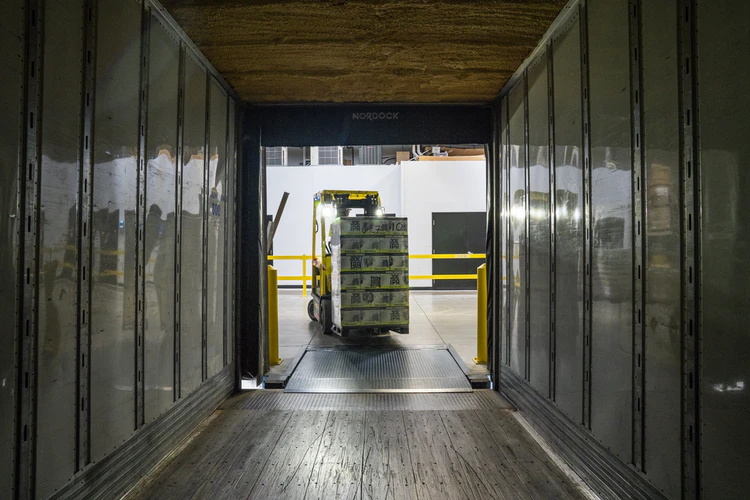The supply chain has become increasingly digitized, with a driver app solution being one of the greatest needs for companies performing supply chain upgrades. As fluid as the digital supply chain is in many instances, company owners and consumers can expect to see changes that benefit their respective interests. An understanding of digital trends and the insights that we learn will help us understand everything.
We’ll take a look at digital transformations of digital supply chain management. As the digital supply chain evolves, it provides more opportunities. The changes that we’ll look at include current trends and how these transformations have been adopted into the supply chain.
Current Trends in the Digital Supply Chain
The digital supply chain is constantly evolving to suit changing needs. As one example, manufacturing outsourcing is projected to grow five percent by 2024, according to Hexa Research. Localization still plays an essential role and will influence how the changes see implementation. Strategy changes made today should ideally include a global perspective.
Customer-driven platforms, including those connected to mobile and social media, have increased the demand for faster delivery times and more personalized service. The Internet of Things has also helped spur the desire for faster, more efficient logistics methods. With technology becoming smarter, the supply chain needs to adapt to keep up and continue to serve consumer needs.
Digital Transformations
Increased access to digital technology is one factor that influences how the supply chain undergoes a transformation. Six trends, in particular, stand out in significance.
- C-Suite Professionals Are Becoming More Tech-Savvy – The supply chain is important as a business function, but there is a growing awareness that the supply chain is more than a function. The C-Suite growth beyond the traditional positions has increased companies’ willingness to incorporate new positions to address supply chain issues.
One of the ways in which this change is most evident is in companies appointing C-suite officers who handle logistics. Closer interaction with aspects of the supply chain is becoming more critical in the business world. An increase in the number of people ordering products online has made the supply chain more important than in previous times.
- Greater Product Complexity – Product complexity has been increasing, owning much of this change to greater connectivity, often through devices like microsensors. The inclusion of this technology in more types of products has helped to increase the functions available once manufactured. Additional technology will help improve the opportunities for new products on and off the sales floor.
Making non-electronic products “smart” makes it easier to incorporate these items into the supply chain at a faster rate. Although many products in use now are still a long way away from using smart technology, these features are increasing the chances of smarter products becoming more readily available. With the demand for such products being high on release, businesses will do well to make their items ready for as quick a release as possible.
- The Impact of Globalization – One of the most important insights today comes from Supply and Demand Chain Executive, which estimates that there is only one position for every six job seekers in supply chain management. An increasingly globalized market has caused decision-makers to look outside their area for new talent. The tools and technology that companies have now make finding the right candidates for supply chain positions easier.
Although there is a greater pool of candidates, this approach is not without risks due to unplanned circumstances like natural disasters or civil unrest. An essential part of taking advantage of globalization might include remaining aware of localized insights that could have an effect on the supply chain. A situation that companies would do well to avoid is having to change their strategy because of an event where they had sufficient warning.
- Increased Outsourced Manufacturing – Outsourced manufacturing is here to stay, with the Hexia research previously mentioned being compelling proof of this fact. One of the greatest challenges, by far, with this trend, is coordinating the logistics in a way that works for all parties. A company can employ workers across multiple regions to fill these needs if their insights make it easier for them to spot any possible problems.
The types of planning that make the most difference in outsourcing include enterprise resource planning, or ERP, and material requirements planning, or MRP. Both of these techniques allow for easier remote management. How much planning goes into outsourcing makes a difference in the overall success of outsourcing-related activities.
- Varying Generational Expectations – Customers in the Millenial and Gen-Z generations have considerably higher expectations than users of previous generations. These customers are more likely to rely on reviews and social media as a part of their decision-making process. Users in this age group were the first generation to grow up using modern Internet and mobile technology.
Customers in these younger generations are accustomed to faster delivery times and increased personalization options. Businesses that have not started to implement these changes are likely losing out with their younger customers. Monitoring insights to determine the user base for a company is of crucial importance.
- Shortened Product Lifecycles – Market advantage has a lot of competition, which has led to shortened product lifestyles. This trend is easy to see in technology products, with many customers upgrading phones or other mobile devices more frequently than in previous years. Any company that does not update its products as quickly will lose out to its competitors.
Some of the insights that decision-makers need to pay attention to in this setting include predictive trends. The sooner you can identify what requires change, the sooner you can start working on making those changes. Supply chain issues go much more smoothly with these considerations taken into account.
Digital Adoption in the Supply Chain
Although some companies have been somewhat slow to adopt digital operations, more businesses are seeing the value of this approach. Closely watching insights on the six digital transformations has given more companies the motivation that they require. The sooner companies adopt these changes, the sooner they will be able to reach all their customers the most effectively.
Conclusion
Adapting to new digital technology is essential for companies that need to stay competitive. The supply chain and logistics industry is one of the most fluid industries that serve consumer needs. As more companies go online, they will need to meet the demand for a customer base that has clear expectations about shipping times and customer service.
Because the supply chain continues to evolve, we may not be able to predict the changes that might take place. However, staying updated on the trends that we have covered is a good strategy to keep in mind.


You can also stay updated by subscribing to iTechCode.